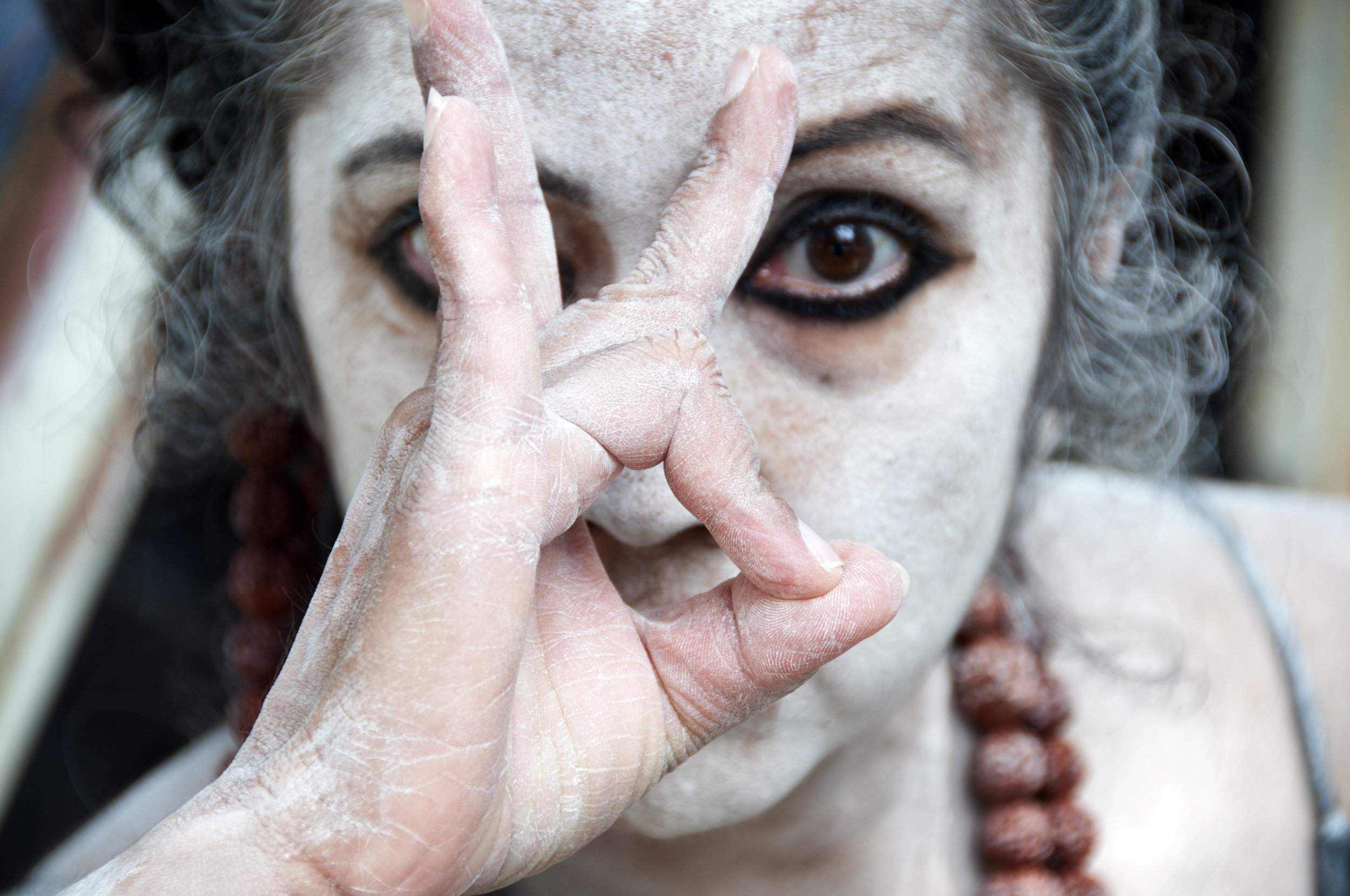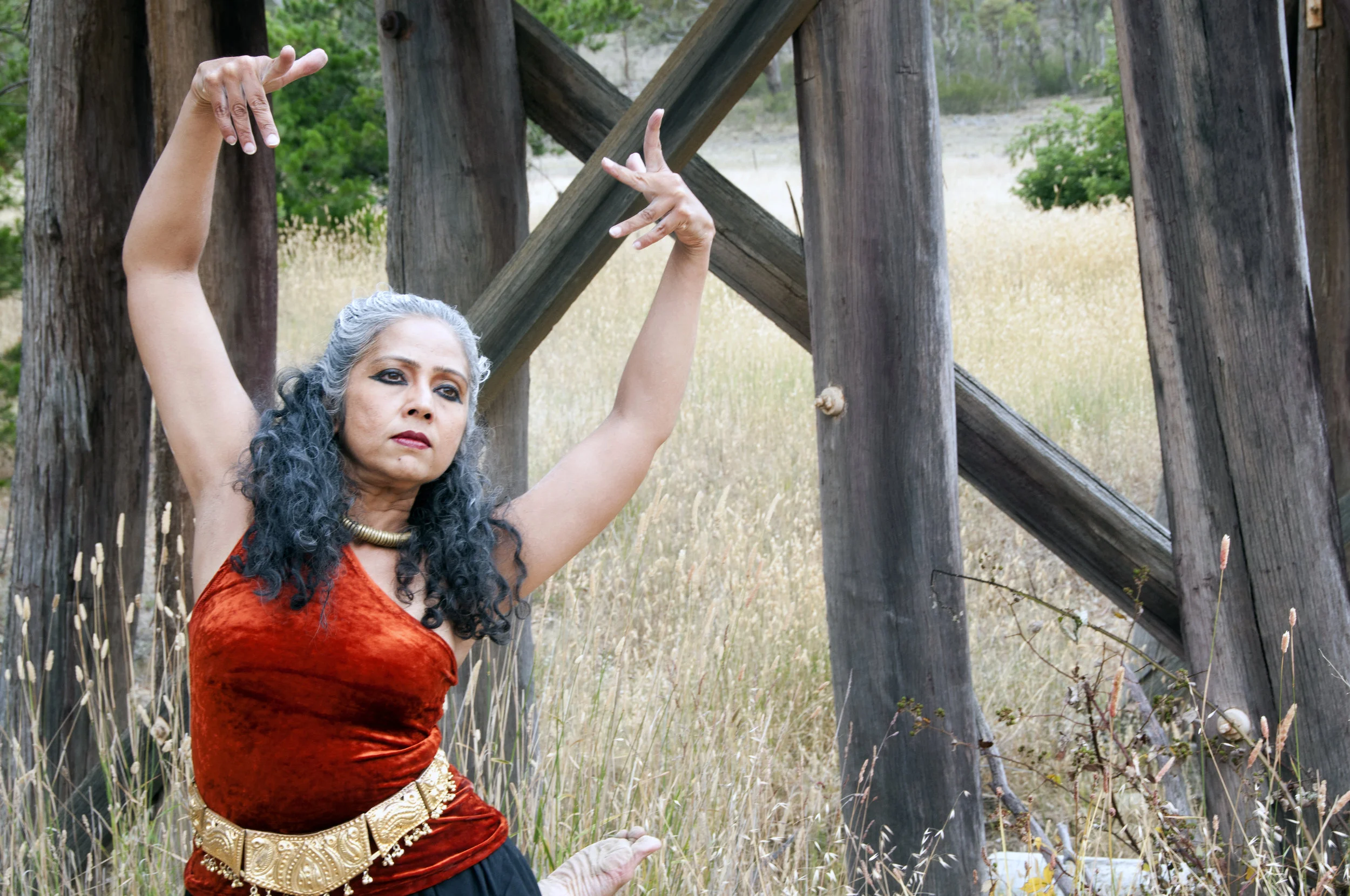Yantras are intricate symbolic representations of deities in Indian contemplative traditions.. Yantra contemplation is a structured practice, inadequately available through texts and largely transmitted through traditional inherited lineages of practice. In the temple dance traditions of India, the dancing body functions as a Yantra when it embodies symbolic modes.
Read MoreThe Ganesha space is a curious intermingling of the most earthy and the most ethereal of experiences. He is at once the space of the ponderous earthiness of our lives, the rootedness of our materiality and of its experiences of fluctuating emotions, and also the enabler of insight by bestowing on us abilities to navigate the earthiness without being subsumed by it or subsuming it.
Read MoreKaranas are like the seeds of dance, like the essential skeleton of the practice. However I do not think they should be interpreted materially as ‘positions’ or 108 steps that form some kind of basic exercises for preparation. Dance, as suggested by the Karana lens, is about learning how to find the essence and how to move in that space of silence and essence.
Read MoreSiva is the archetype of destruction. Usually we think of destruction of Siva in cosmic dimensions- as in destroyer of the cosmos so that time and space can start again as part of the cyclical process. In my experience Siva is also the destroyer on a very personal level. He destroys paradigms, roles and comfort zones. Approach him with wariness because he does not offer comfort and the known as gifts.
Read MoreIn recent times, approaches to embodied traditions have increasingly become aligned to the ways in which we approach textual discourses. This means that we expect that they will yield to definitions and a certain stability of meaning and understanding. What if the very purpose of embodied ritual traditions were to create interactions of ambiguity and mystery?
Read MoreVairagya is inadequately translated as detachment. However it means freedom from want, desire and need and all its consequences such as consuming, competition and hoarding. Vairagya is the foundation of any moksha practice in Indian traditions—without living this state, there is no moksha practice.
Read MoreIn Indian tradition, practice as knowing was a structured approach that had deliberate and specific relationships between practice and text and between practice and other ways of knowing including implicit aspects such as presence and relationship between teacher and student. The fact that texts cannot contain the practice is inevitable in a tradition which is founded upon the principle that the purpose of these practices is freedom from the chitta (mind and material reality) and all of its domains which includes words/language.
Read MoreThe notion of diminishing is the heart of Nirveda, the feeling constellation that is the foundation of Shanta. Diminishing is portrayed by the archetypes of Shanta in multiple ways—literally diminutive in stature, being a adolescent (child-like) and through taking on the role of a beggar.
Read MoreGreen Tara suggests that dynamic action in Shanta is that which is essential, effortless and light (playful). It’s power is not the power we recognise in our usual understanding. Like all aspects of Shanta, the power is subtle but far more transformational than power sourced from the fear-subsumed domains of the mind.
Read MoreActing in surrender is central to Shanta and all of the other bhavas go towards creating this feeling space. Surrender is an active, committed and empowered feeling space where choice is reclaimed in the midst of the inescapable realisation about the central experience of life as transitory and therefore of impermanence.
Read More









